
Maruti Suzuki Swift 2024 Review: Manual And AMT First Drive
- May 16, 2024
- Views : 10679


Update: The 2019 Maruti Suzuki Ignis gets roof rails and new safety tech updates. Prices have increased from Rs 3,000 to Rs 16,000 depending upon the variant. And the diesel engine option hasn't made a comeback. All the details are available here.
Looked at it in parts, Maruti Suzuki’s Ignis is very interesting. As a compact hatch with a tough and cheerful feel, the Ignis has found huge appeal in India. Class leading features add to the wow factor, and the interiors promise a youthful feel too. While the engines are the tried and tested 1.2 litre petrol and 1.3 litre diesel engines (the diesel is currently discontinued from the lineup), the inclusion of automatic transmission options for both engines, courtesy of the simple and cost efficient AMT, add another element of specialness to the Ignis. And all this has been built around Maruti’s new fifth-generation platform. But is the Ignis greater than the sum of its parts? We take a first drive to know exactly that.
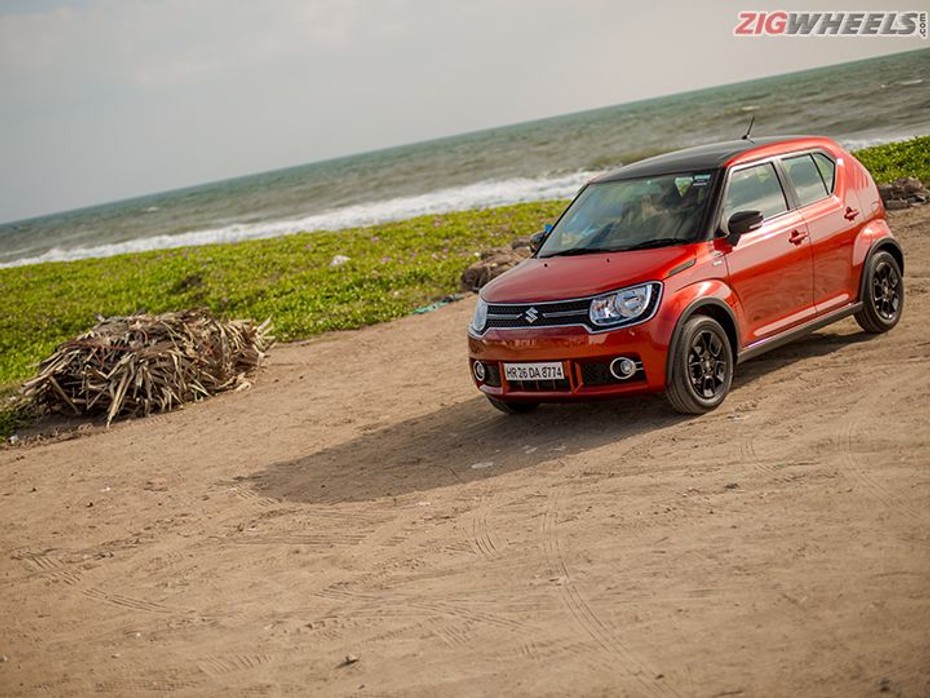
Style Potion
At 3700mm in length, the Maruti Suzuki Ignis is a compact hatch. But it isn’t exactly what you would call small. It is longer than a Renault Kwid and Honda Brio (by 20mm) and the KUV 100 (by 25mm), but it is smaller than Hyundai's Grand i10 (by 65mm). It is clearly taller than both the hatches, but in terms of overall height it still isn’t as high and mighty as the Mahindra, which sits 40mm taller. While they all aren't direct competitors it is interesting to note that the Ignis has the longest wheelbase here and that does wonders for its stance. Riding on 15" wheels with 175/65 section tyres, this compact hatch looks planted and confident.
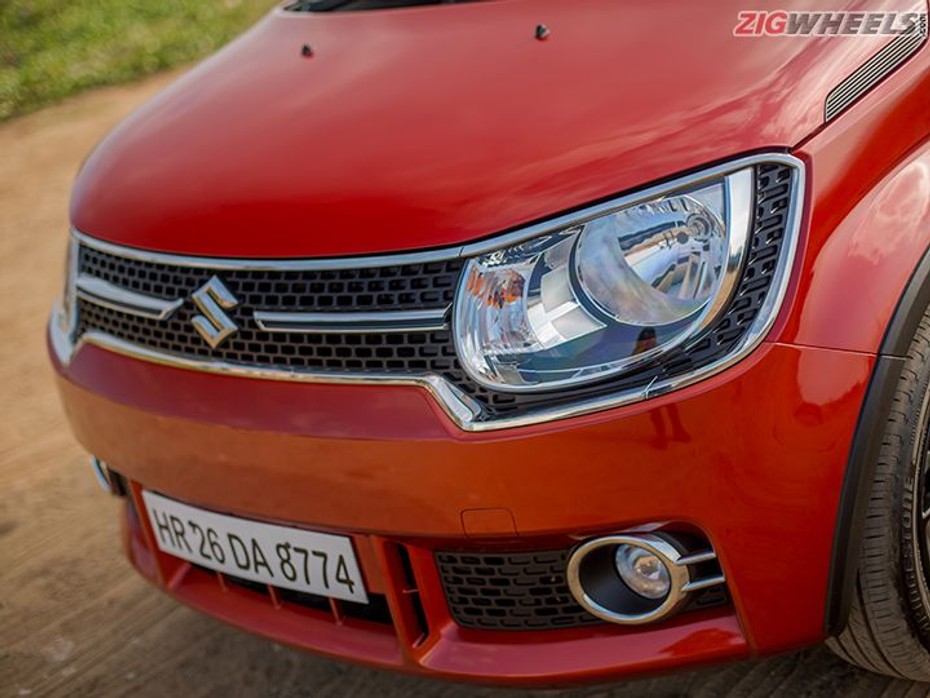
While the basic design sets the tone, the exterior design creates a quirky blend of ruggedness and coolness. The square-jawed look and its upright front makes it look un-hatch like. The face is characterised by a single frame grille that envelopes the LED DRLs and, in a first for the segment, the LED projector lamps too. Down below, the geometric shape for the air dams increases the sense of tallness and adds to the quirkiness of the design. Smaller details like the rubberised strip on the side of the bonnet harks back to Suzuki’s classics, in this case the first Vitara! Sweep your gaze down the sides and the Ignis creates a statement with its floating roof. The blacked-out A and B pillars connect it to the Swift too. The kinked window line helps make it distinctive. The flared wheel arches, the light cladding along the wheel arches, and the side sills (albeit only for the Zeta and Alpha variants) give it a sense of toughness too.

One contentious aspect of the design is the expanse of metal that forms the C-pillar: three shark-like gills stamped into the metal there trying to make it more palatable. Nonetheless, along with the high-set boot, the Ignis looks a bit awkward from this angle. The rear is the least pleasing part of this design. The tail lamp design looks a bit dated and seem a bit out of of place, especially when juxtaposed with the headlamps at the front. From the rear, the Ignis looks a bit disproportionate as it narrows at the top and the roof line slopes downwards. This sensation is exaggerated as the flared wheel arches give it a wide stance low down. One cool touch is the plain black plastic section on the rear bumper, which will let you get out of light bumps without losing any paint.
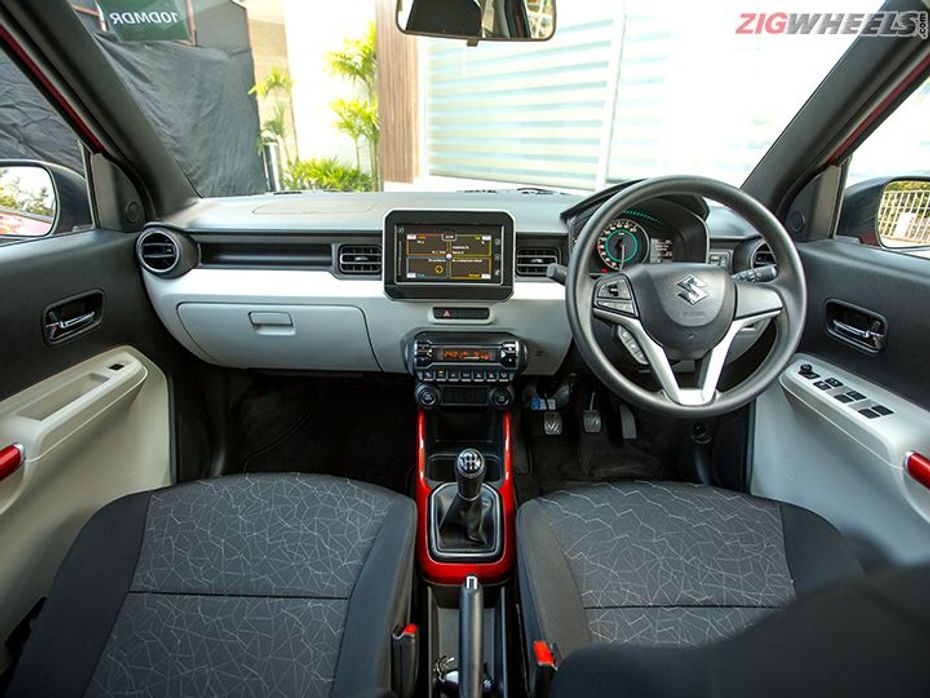
Inside story
One thing is for sure: for a car of its size the Ignis feels quite spacious. Starting with the boot space -- 260 litres of storage is only 5 litres less than the Grand i10. The 60:40 split rear bench can be folded down to accommodate more luggage when required. The Ignis play its stronger cards as you step into the second row. The doors open nice and wide, and this helps make ingress easier as you do not need to duck down while stepping in. Once sat inside, there is a great sense of roominess thanks to the fixed quarter glass that slots into kinked window line. The Ignis will accommodate taller passengers well as there is ample headroom and knee room too. However, sitting three abreast will be a bit tight. Also, there are adjustable headrests for two passengers here. While the door pad has space for a bottle, it will accommodate smaller bottles only.
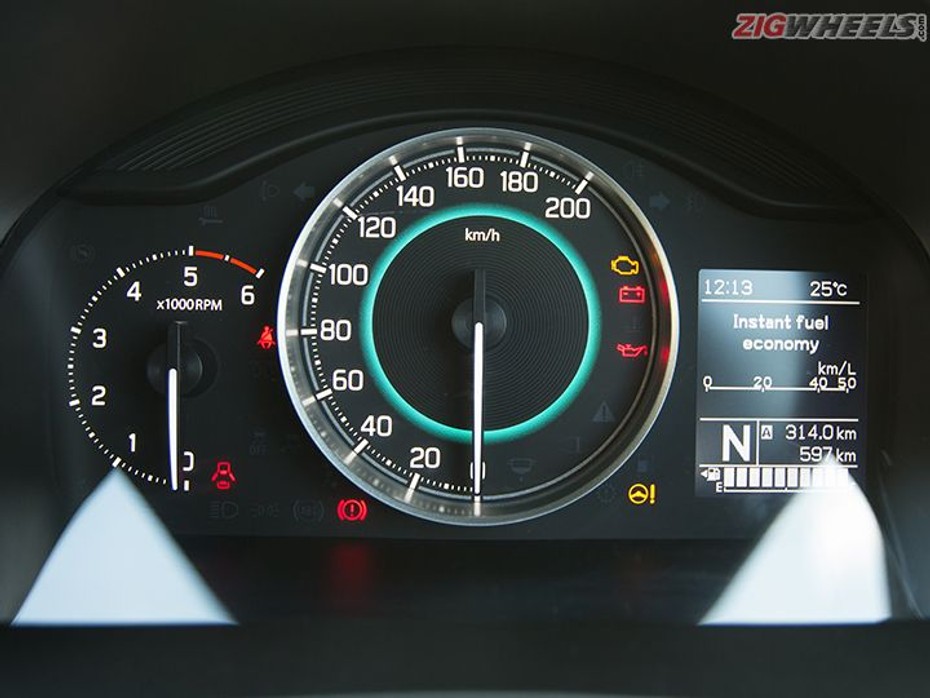
Now, when you step into the front, the Ignis wows you with its modular and minimalistic design for the dashboard. There is a floating shade for the analogue and digital instruments for the driver. The slim and compact dash has a free-standing touchscreen infotainment system mounted on it, albeit a bit offset to the left. There is no "centre console" as such that links it to the air con controls either. The lower variants make do with an infotainment system that gets a simple LED display and the the air-con is manually adjustable. This setup looks a bit awkward in pictures, but it feels quite acceptable when seen in the flesh.
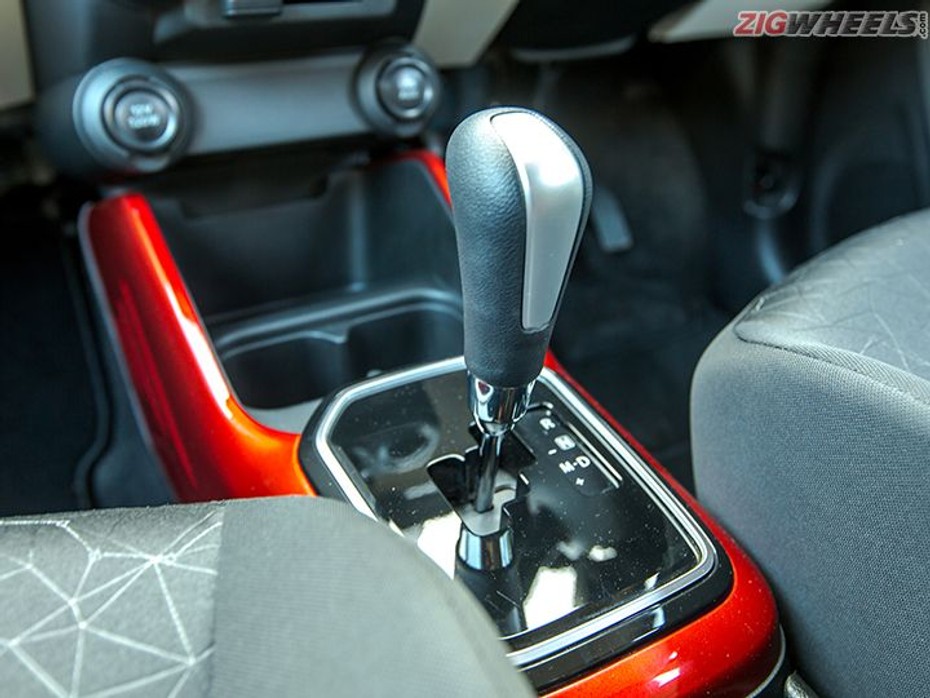
Spend some time in the cabin and it starts to feel a bit “much”. For instance, the air-con vents are rectangular towards the centre and the outer ones are round and get a faux carbon-fibre finish. The dashboard and door pads are dual tone, while the grab handles on the door pad and surround for the floor console have colour-coded elements. However, the shut lines become obvious on the white plastic bits and the lighter colour will get dirty very quickly. Also, the grab bar is a cool idea, but the colour coded bits looks a bit tacky. Nonetheless the plastics and build quality feel sturdy. However, on the safety front, the Ignis comes well equipped, sporting a driver and passenger airbag as standard. All variants of the Ignis also pack ABS and EBD. The new platform is also engineered to comply with upcoming Indian crash tests. The design also takes into account pedestrian crash safety requirements.

Drive Dynamo
The Ignis is powered by a 1.2 litre petrol and 1.3 litre diesel engine, both of which are closely related to the Baleno. The diesel makes 75PS of power and 190Nm of torque. The diesel starts to offer good drivability from 1500 rpm and that makes it easy to keep pace with traffic around you. However, the engine gets a spring in its step from 2000rpm and pulls to the 5200rpm limiter. While the engine gets noisy at higher rpms, there is reasonable progress as well. The revelation, though, is the diesel-equipped AGS (AMT). For the most part, the crudeness associated with AMTs has been wiped out. Changes to software and calibration has resulted in a slick and positive AMT experience.
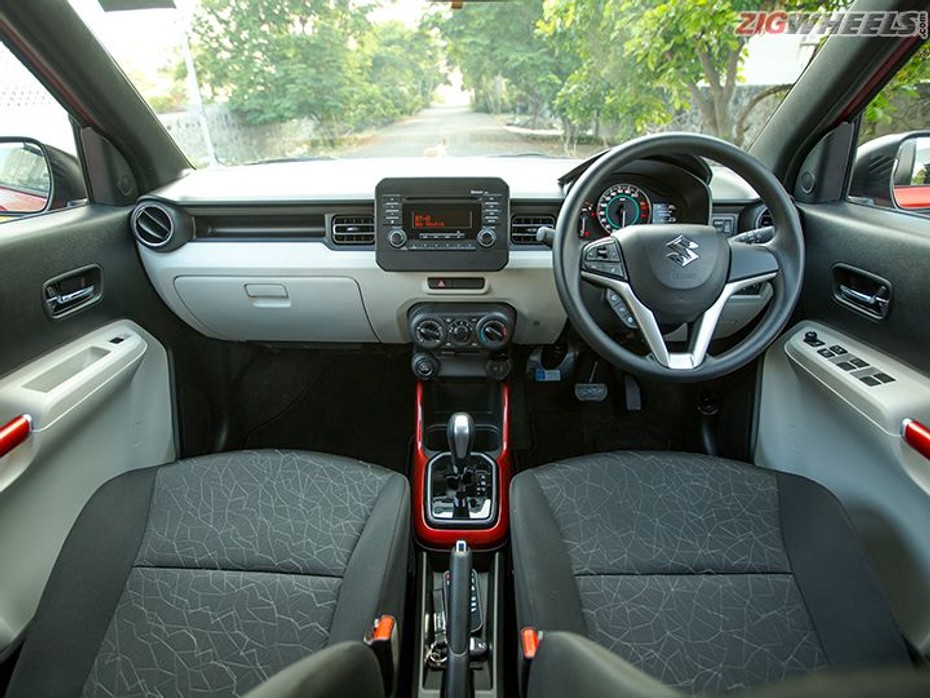
Often, it is only when you look at the information display that you can make out that the gear shift has been made. Gear changes, up and down, are smooth. There is virtually no head-nod or shift shock here. However, if you put your foot down hard when looking for an urgent response the suddenness becomes apparent. On the upside, the shifts are quick and the gearbox is eager to shift down, and jumps down two gears when required too. There is a manual mode, but you will only want to use that when you want to drive at a relaxed pace because the gearbox’s logic keep you in the meat of the power and you are rarely left wanting for response. What you need to get used to is that, at times, the Ignis continues to surge forward even after you have lifted off the throttle as the spooled-up turbo continues to feed the engine. But, this is something you quickly get used to.
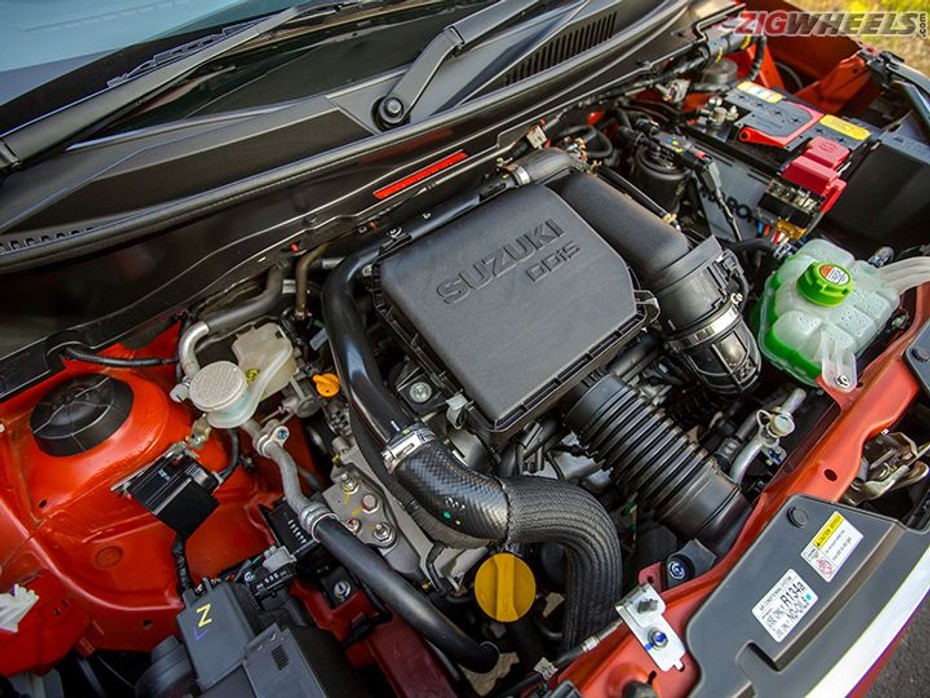
The petrol engine develops 83PS of power and 113Nm of torque. As the Ignis is some 50kgs lighter than the Baleno, it feels more responsive lower in the rev range. There is great drivability from the engine even at low and mid-rpms. It is easy to leave the engine hovering between the 1000-2000rpm mark while going about your business in the city. The AMT equipped is just as capable on the petrol as it is on the diesel. The gearbox logic makes great use of the torque available at low and midrange rpm. But, its happy to jump down gears to get the revs up and speed things up. But, the real test of the gearbox was in Chennai’s murderous traffic. Through 45 mins of errant pedestrians, magically appearing motorcycles, race-taxis, and bovine traffic the transmission worked fluently enough that I could focus on just steering my way through the challenges without having to second guess what the gearbox was upto.
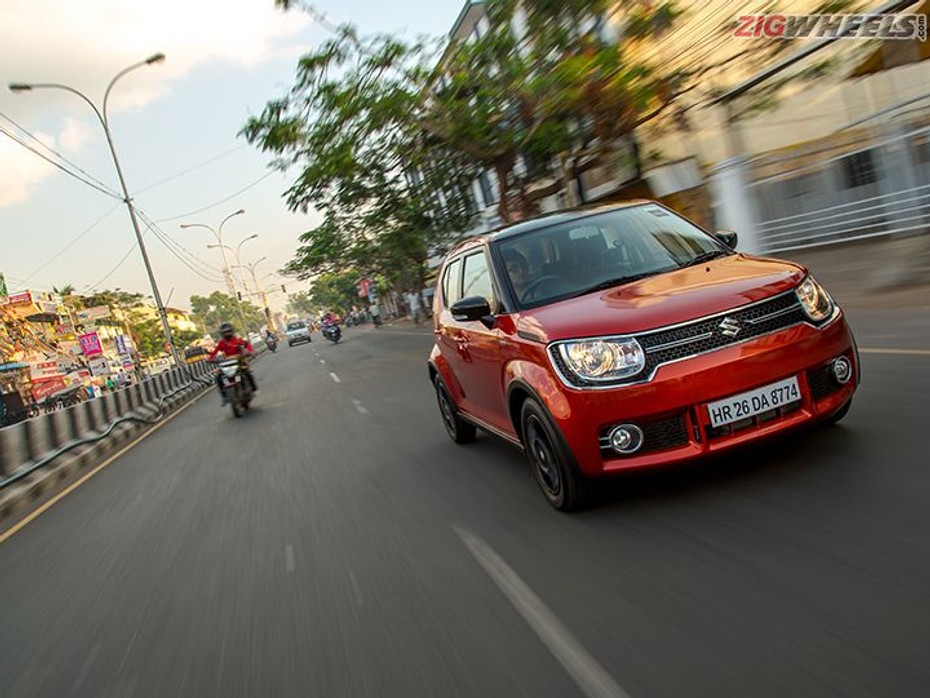
Ride right
Built on the fifth-generation platform, the Ignis has a more robust platform underpinning it. All variants get 175/65 R15 tyres and are sprung by MacPherson struts at the front and a twist beam at the rear. While the diesel variant rides on firmer springs, which adds a sense of maturity in the way it rides, both variants feel largely similar. The suspension is remarkable in its ability to take out the harshness dealt by sharp manhole covers and deep potholes, which we expected to thunk hard into the cabin. What makes it all the more impressive is that the suspension operates with a quietness through it all. The setup is pliant too, and makes city roads much easier to deal with. On open roads, the Ignis felt quite comfortable at triple digit speeds and remained controlled during fast lane changes too. We weren’t expecting this to be an enthusiast-oriented package, so the lack of feel from the direct and well-weighted steering isn’t something we will complain about.
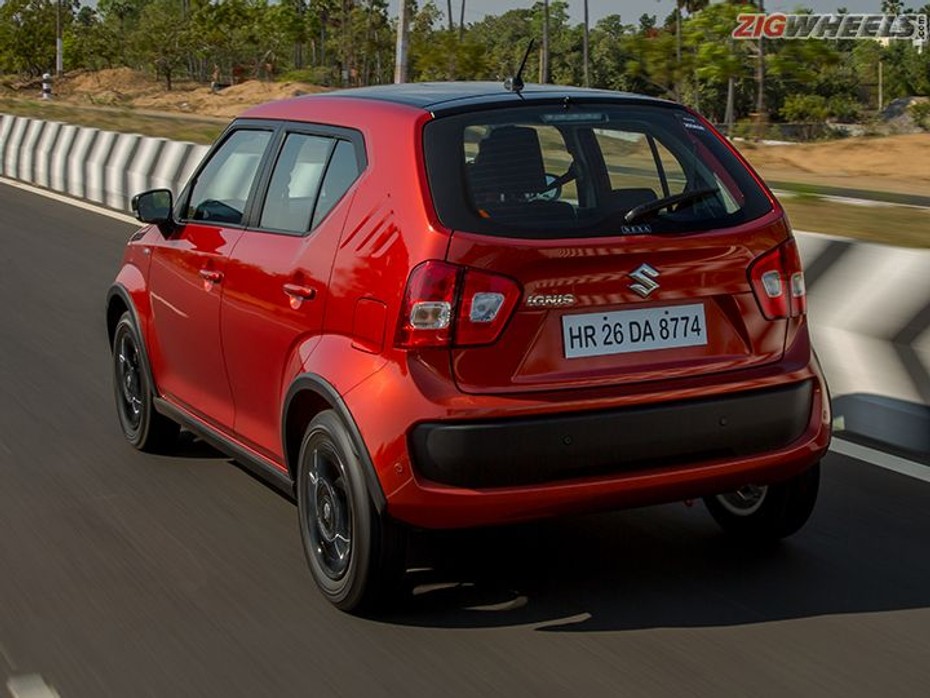
Bottom line
Yes, the Ignis is a dressed up hatch, and it has shortcomings. Its styling is head-turning but polarising, and it looks a bit awkward when viewed from the rear. Its interiors, although funky, could do with a bit more finesse. However, the Ignis is very well equipped and spacious. The way it rides and drives makes it feel sophisticated and friendly to use too. The option of well-engineered automatic transmissions widens the Ignis' repertoire further. The Ignis may seem pricey, but bear in mind it packs ABS, EBD, airbags and crash safety measures engineered into its chassis. All in all, the Ignis packs attitude and appeal, outside and inside, to drive and own, and is properly sensible too. The Ignis is a hatchback, and a statement too.
Also Watch: Maruti Suzuki Ignis First Drive Video Review here
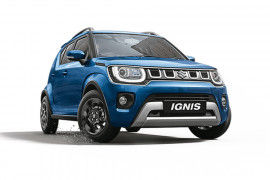

Maruti Suzuki Swift 2024 Review: Manual And AMT First Drive

Hyundai Venue Facelift 2022 Review | A Lot More Desirable?

Maruti Suzuki Alto K10 First Drive | Keeping It Simple, Stupid |...
 Maruti S-Presso
Maruti S-Presso
 Maruti Swift
Maruti Swift
 Hyundai Venue
Hyundai Venue
 Maruti Alto K10
Maruti Alto K10
 Maruti Wagon R
Maruti Wagon R
India's largest automotive community
 Here’s When The Audi RS Q8 Facelift Will Be Launched In India!
Here’s When The Audi RS Q8 Facelift Will Be Launched In India!
 Here Is The List Of Cars Tata Showcased At Bharat Mobility Global Expo 2025
Here Is The List Of Cars Tata Showcased At Bharat Mobility Global Expo 2025
 First In 2022 And Now In 2025! What The Tata Avinya Really Is? – Here’s All You Need To Know
First In 2022 And Now In 2025! What The Tata Avinya Really Is? – Here’s All You Need To Know
 Here’s Everything That We Saw At Maruti Suzuki’s Pavilion At The Auto Expo 2025
Here’s Everything That We Saw At Maruti Suzuki’s Pavilion At The Auto Expo 2025
 Maruti Dzire
Rs. 6.79 Lakh
Maruti Dzire
Rs. 6.79 Lakh
 Maruti Swift
Rs. 6.49 Lakh
Maruti Swift
Rs. 6.49 Lakh
 Maruti Ertiga
Rs. 8.69 Lakh
Maruti Ertiga
Rs. 8.69 Lakh
 Maruti Brezza
Rs. 8.34 Lakh
Maruti Brezza
Rs. 8.34 Lakh
 Maruti FRONX
Rs. 7.51 Lakh
Maruti FRONX
Rs. 7.51 Lakh
 Maruti Swift
Rs. 6.49 Lakh
Maruti Swift
Rs. 6.49 Lakh
 Maruti Baleno
Rs. 6.66 Lakh
Maruti Baleno
Rs. 6.66 Lakh
 Maruti Wagon R
Rs. 5.54 Lakh
Maruti Wagon R
Rs. 5.54 Lakh
 Tata Tiago
Rs. 4.99 Lakh
Tata Tiago
Rs. 4.99 Lakh
 Maruti Alto K10
Rs. 3.99 Lakh
Maruti Alto K10
Rs. 3.99 Lakh